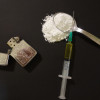What is the current knowledge of treatments for Von Recklinghausen disease?
Question
Listener Ann Hawke says, when my son, who is now 23, was 15 months old we discovered that he had neurofibromatosis type 1 or NF1, also known as Von Recklinghausen disease. At the time we were told that the next 15/29 years would see important developments for sufferers, but I'm not aware of any developments that could help. Please could you give me an update of the situation with this condition - which I believe is the most common genetic disease but one which does not often make any headline news.
NF1 affects the nerves and causes a range of problems in the body, including both benign and malignant tumours and learning problems. To find out about the current state of treatment and research I spoke to Rosalie Ferner, professor of Neurology at King’s College London, who runs the neurofibromatosis service at Guys & St Thomas’s hospital.
Answer
Rosalie - A lot has happened since I started being involved in the late 1980s. They found the gene at that time, so they know where the gene is and they found a bit about the function of the gene. The gene product is really this tumour suppressor. So, simply stated, it keeps cells controlled. So, it stops them growing too much and dividing too much. The research has gone into a number of areas. It's gone into learning problems which is one of the commonest manifestations of the condition. It's usually mild learning problems. Research has gone into tumours - both benign and malignant - and it's gone into bone. I think these are sort of the big areas. The two things that are being done, they're looking at underlying molecular mechanisms so that they can target treatment to the particular problem, and they're also looking quite carefully at something that is not quite so buzzy, but very important, which is outcome measures. So, it's no good having a treatment if you don't know how to measure whether it's been beneficial or not. When you look at outcome measures, you want to look at things that are objective have you shrunk the size of something, have you improved intelligence. But importantly, you want the patient's point of view because that doesn't always coincide with what you see as an improvement.
Kat - Have there been significant advances in treatments for these types of tumours and diseases?
Rosalie - Yes, they're starting to come through. I think one always needs to be cautious. So, if you take for instance the benign neurofibromas, the lumps, they cause a lot of problems because they're cosmetically difficult. They can cause neurological problems. They can cause pain and bleeding. They've used mouse models which are very good models for the disease to screen potential drugs that may block these rather complex tumour formation pathways. There have been a few drugs that have been tried with limited success. There was a new drug called a MEK inhibitor. MEK is just one of those signals on the pathway that activates tumour formation. Very early results suggest that they shrink neurofibromas a little. I wouldn't say massively, but a little bit promising. So, the hope is to increase the clinical trials for that. From the point of view of learning, they've tried statins - statins are buzzy for lots of reasons - but it was thought again from the mouse models that statins might help with improving learning. They've done a couple of trials on children and so far, there haven't been huge beneficial results. What this is saying is that it's a huge step forward to understand a bit more of the molecular mechanisms underlying complications. These are early stages in treatment where people are trying to have certain blocking different bits of this very complex pathway. There are treatments available. Are they effective? At this stage, it's quite early to say.
Kat - Thanks to listener Ann Hawke and Professor Rosalie Ferner. If you've got any questions about genes, DNA and genetics, just email them to me at genetics@thenakedscientists.com.









Comments
Add a comment